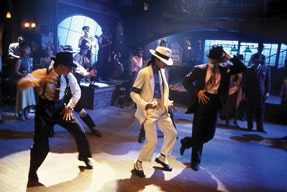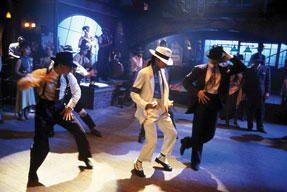Arts
Jackson Heights

What does the death of Michael Jackson mean to an Indian of my generation? A generation not much removed from the late pop idol in terms of age, but hugely distant nevertheless in cultural orientation. More pointedly, why should the possibly drug-induced cardiac arrest of a skinny (even anorexic) Black crooner of dubious musical depth and ambiguous sexual preference, stir up anything more than a fleeting ripple of grief among middling Indians? Indians whose idea of good looks is inseparably tied to physical heft wrapped in a fair skin, who are apt to bristle at so-called deviant proclivities, and whose range of popular-music taste began with Lata Mangeshkar and ended with Kishore Kumar?
But not even the most insular of Indians — particularly those who lived, studied or worked in the United States in the 1980s — could claim to be untouched by the Jackson Phenomenon. It came roaring into the America’s collective consciousness in the early years of that decade, and sustained itself into the 1990s, with generous help from extra-musical happenings in the singer’s life — not least, his colorful lifestyle. And to those of us who landed there as graduate students at that time, the man was our introduction to a pan-American concept of cultural identity, and his work was our gateway of sorts to American acculturation and acceptance. I can never forget the sight of an Indian friend at Ohio University in Athens carrying a brand new copy of Michael Jackson’s just-released Thriller album into my dorm room. “Milinda,” I exclaimed. “You too!” (His real name was Milind, elongated by friends to rhyme mischievously with “Melinda.”) Milind hailed from Dhule, a small dusty town in northern Maharashtra and, although as smart as the next doctoral student, he was as alien to the world of pop music as rustic Dhule is to the razzmatazz of Los Angeles. A sheepish grin attesting to his plight of being caught with a hand in the sinful cookie jar, Milind explained, “Just wanted to find out what all the noise is about…” He sure did. I suspect it got him so clued in to the conversational reference points of American campus life that he soon put on a slurry Yankee accent, began dating American girls, and finally ended up marrying his Filipino classmate. (Remember that Filipinos, colonized once by the United States, often turn out to be more American than the Americans.) Milind, a former comrade-in-the-making who spouted Marxist jargon after a couple of stiff drinks, is today the epitome of capitalist success. As a senior executive in a U.S.-based multinational company, he counts his financial assets in the millions. Not all of us took that route. I can speak best for myself. I first landed in the U.S. in September 1982, weeks before the Thriller album release. Although familiar with Western cultural mores, thanks to the typical Indian city-bred youth’s diet of Time, Newsweek and Hollywood films, my favorites in non-Indian music were restricted to the Beatles whose tunes often echoed international influences and whose lyrics sometimes nudged the frontiers of poetry, and to the foot-tapping rhythms and the occasionally insightful themes from Boney M and Abba numbers. When I reached the country, America was done with condoling the senseless 1980 killing of Beatle John Lennon, and Abba too had somehow become passé. Boney M, strangely, was nowhere on the scene or in the music stores, thanks — I was told — to a rift between the Caribbean pop group’s business manager and the American recording industry honchos. The stage, I guess, was all set for a relatively new entrant on the American — and international — music landscape. Michael Jackson, with his smartly crafted Thriller, stormed into it: the album created unprecedented tremors. As an eye-witness in the U.S. — that is, at the very epicentre of the quake — I have never seen a music album grab a nation’s attention and its affection in such measure. It played in homes, in dormitories, in cafeterias, in malls, in cars, in airports, and in the boom boxes carried on shoulders by youths wearing turned-back baseball caps. With fans gobbling up nearly 60 million copies, Thriller remains the world’s largest-selling music album.
Soon Jackson was seen grabbing something else — his own crotch, if you please. Was it because his later albums did not fare as well, that he resorted to cheap street-corner tapori-like pelvic thrusts, not to mention those bizarre get-ups and outfits? Was he — with an emphasis on his nimble-footed dancing skills and hi-tech videos — heralding an age of the “star-performer” to replace the bygone era of a mere “singer”? Did that emphasis effectively cover up — and later, come back to expose — the vacuity of his music and lyrics? And did that vacuity in fact reflect the state of his personal life? Genuine fans of the pop star — who fondly remembered an outrageously talented kid of five leading his older brothers in the old Jackson Five concerts — were aghast at the decline. The rumored drug-related excesses, the whispered fondness for young boys, the façade of media-showcased marital happiness to counter allegations of child-molestation, the flirtations with Islam and Jehovah’s Witness, the multiple medical procedures which resulted in his pale and bloodless plasticene look and a horrific distortion of his facial features. The final straw, I believe, came when Jackson dangled his little child head-down outside the upper-floor hotel window in Berlin when his fans clamored for a look. No amount of publicity thereafter about Michael’s physical and mental trauma at the hands of an abusive father during his childhood years could convince people that the pop star had not come unhinged. I must thank Mr. Jackson though for a sudden spurt in my popularity as a teaching assistant in the mid-1980s. After a class, students flocked around me with an unusual interest in the subject I was assigned to teach. Later, a student blurted out the explanation: “Oh, we think you’re really trendy,” she said. The class was apparently taken in by the fact that I had, like Michael Jackson, worn white socks with black shoes. Little did those undergrad teenyboppers know the real reason for the “trendy” choice: my dark-coloured socks were awaiting a tumble in the dryer! Let my wife’s elderly aunt from Karnataka have the last word on Michael Jackson’s sexiness. She sat through one of his videos where he chases a girl and, in the process, repeatedly gets in and out of a car. “What’s so sexy about a man who follows a girl into a car, then crawls out of it behind her, and does nothing in between?” she asked, with a wry shrug.
|


